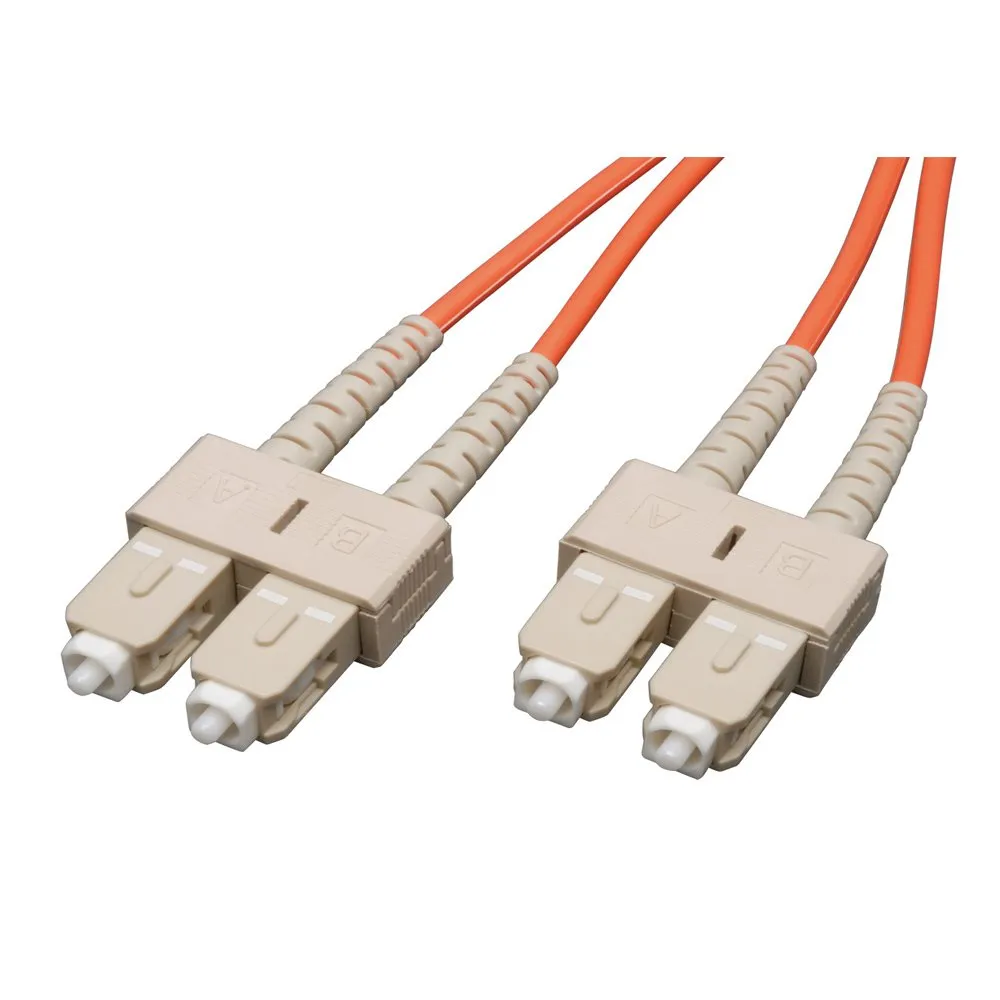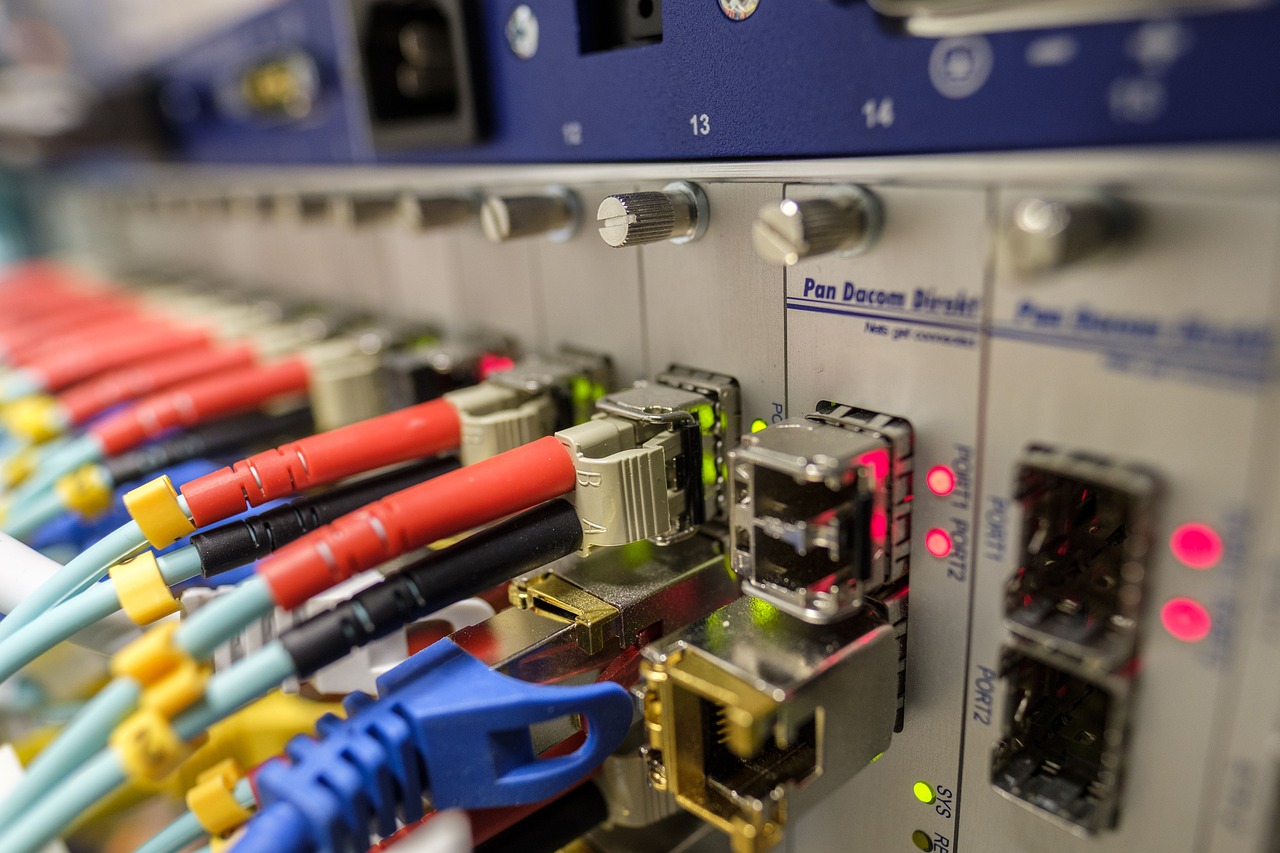5 Key Differences Between LC/UPC and SC/UPC Connectors for Multimode Fiber Optical Patch Cables

Understanding Fiber Optical Patch Cables
Fiber optical patch cables play a crucial role in ensuring seamless data transmission within networking systems. Multimode fiber, in particular, is widely used in these cables due to its ability to carry multiple light rays simultaneously. This makes it an ideal choice for short-distance data transmission within buildings and campuses.
The Role of Multimode Fiber in Networking
Multimode fiber operates on the principle of allowing multiple modes of light to propagate through the optical fiber. This enables the transmission of data over short distances with high bandwidth capabilities, making it suitable for applications such as local area networks (LANs) and data centers.
How Multimode Fiber Works
In multimode fiber, light signals travel through the core using various paths or modes. This allows for the efficient transmission of data over short distances, contributing to the overall performance of the network.
Importance of Choosing the Right Connector
Selecting the appropriate connector for fiber optical patch cables is critical as it directly impacts network performance. The connector serves as the interface between the cable and networking equipment, influencing signal quality and reliability.
Impact on Network Performance
The choice of connector can significantly affect signal loss, back reflection, ease of use, and overall cost-effectiveness. Therefore, understanding the differences between connectors such as LC/UPC and SC/UPC is essential for optimizing network performance.
1. Form Factor and Application
When it comes to Fiber Optical Patch Cables, the choice between LC/UPC and SC/UPC connectors depends on the specific requirements of the networking environment.
LC/UPC Connectors: Ideal for High-Density Environments
The LC/UPC connectors are well-suited for high-density environments where space is a premium. Their smaller form factor allows for more connections in limited space, making them ideal for applications such as telecommunications rooms and data centers.
Smaller Size, Bigger Impact
The compact design of LC/UPC connectors not only saves valuable space but also enables higher port density, providing flexibility in managing intricate cabling systems within confined areas.
SC/UPC Connectors: Preferred in Data Centers
On the other hand, SC/UPC connectors are preferred in data centers and other similar settings due to their compatibility with existing infrastructure and equipment. Their larger size compared to LC/UPC connectors makes them easier to handle during installation and maintenance processes.
Why Size Matters in Certain Applications
In scenarios where ease of handling and robustness are prioritized over sheer port density, the larger form factor of SC/UPC connectors proves advantageous. This makes them suitable for applications that demand durability and accessibility in challenging environments.
2. Insertion Loss and Back Reflection
When evaluating LC/UPC connectors, it becomes evident that they are designed to minimize insertion loss and ensure high performance in data transmission.
The Technicalities of Insertion Loss
Insertion loss, also known as signal loss, refers to the decrease in optical power as light signals pass through a connector. With LC/UPC connectors, the focus is on achieving low insertion loss to maintain the integrity of data transmission. This is particularly crucial in high-bandwidth applications where signal strength must be preserved to avoid disruptions in network operations.
On the other hand, SC/UPC connectors prioritize a balance between cost and performance, taking into account factors such as back reflection.
Understanding Back Reflection
Back reflection, or optical return loss, pertains to the amount of light that gets reflected back towards the source due to irregularities or imperfections in the connector end face. SC/UPC connectors are engineered to manage back reflection effectively while considering cost implications. This ensures that signal quality is maintained without compromising on overall affordability.
3. Termination and Cost Considerations
When it comes to termination and cost considerations, the differences between LC/UPC and SC/UPC connectors become apparent, impacting the overall expenses and precision of fiber optic installations.
LC/UPC Connectors: Precision Comes at a Price
The process of termination for LC/UPC connectors involves meticulous attention to detail and precision. Each fiber strand must be carefully aligned and polished to ensure minimal signal loss during data transmission. This level of precision in termination contributes to the reliability and performance of the network, especially in high-bandwidth applications where signal integrity is paramount.
The Process of Termination
Terminating LC/UPC connectors involves several steps, including stripping the fiber cable, cleaning the fibers, aligning them precisely within the connector ferrule, and then securing them in place through epoxy or mechanical means. This intricate process demands specialized tools and expertise, adding to the overall cost of deployment.
SC/UPC Connectors: Economical and Efficient
On the other hand, SC/UPC connectors offer a more economical approach to termination without compromising on efficiency. The termination process for SC/UPC connectors is relatively straightforward, requiring less intricate alignment and polishing compared to LC/UPC connectors. This results in reduced labor costs and faster deployment times.
Why SC/UPC Connectors Are Cost-Effective
The simplified termination process for SC/UPC connectors translates to cost savings in terms of labor and resources. Additionally, their compatibility with quick-connect assemblies further enhances installation efficiency, making them an economical choice for various networking environments.
4. Ease of Use and Security
LC/UPC Connectors: Secure but Tricky
When it comes to LC/UPC connectors, they are known for providing a secure connection, especially in high-density networking environments. However, their small form factor can present challenges during installation and maintenance.
The Challenge of Small Form Factor
The compact size of LC/UPC connectors, while advantageous in terms of space efficiency, can be tricky to handle, particularly when connecting and disconnecting patch cables in confined spaces. This requires careful maneuvering and attention to detail to ensure that the connections are properly secured without risking damage to the delicate components.
SC/UPC Connectors: User-Friendly Design
In contrast, SC/UPC connectors are designed with user convenience in mind, offering a more straightforward approach to connectivity while prioritizing security.
The Advantage of Push-Pull Locking Mechanism
One notable feature of SC/UPC connectors is their push-pull locking mechanism, which allows for quick and secure connections. This design simplifies the process of inserting and removing patch cables, making it easier for network technicians to manage connections within data centers or other networking environments.
Enhanced user experience
Simplified cable management
Quick and secure connections
The user-friendly nature of SC/UPC connectors contributes to efficient operations and reduces the likelihood of errors during installation or maintenance tasks.
5. Choosing the Right Connector for Your Needs
When considering the selection of connectors for fiber optical patch cables, several factors come into play to ensure that the choice aligns with specific networking requirements.
Factors to Consider
Application: Understanding the intended use and environment where the connectors will be deployed is crucial. Different applications may demand varying connector sizes and form factors, influencing the decision between LC/UPC and SC/UPC connectors.
Budget: Financial considerations play a significant role in connector selection. Evaluating the upfront costs as well as long-term maintenance expenses can guide the decision-making process, especially when comparing the cost differences between LC/UPC and SC/UPC connectors.
Future-Proofing: Anticipating future network expansion or technological advancements is essential. Selecting connectors that align with potential scalability and evolving industry standards can contribute to long-term cost savings and operational efficiency.
Expert Recommendations
Expert opinions often provide valuable insights into making informed decisions regarding connector choices for fiber optical patch cables.
When to Choose LC/UPC Over SC/UPC
In scenarios where high-density connectivity within limited space is a priority, opting for LC/UPC connectors proves advantageous. Their smaller form factor enables efficient utilization of space without compromising on performance. Additionally, in applications requiring precision termination and low insertion loss, LC/UPC connectors are recommended to maintain signal integrity effectively.
See Also
Contrasting MTP versus LC/UPC Cables for 100G Cabling
Advantages of RoHS-Compliant LC/UPC and SC/UPC Fiber Patch Cables
Comprehending the 2.0×5.0mm SC UPC Single-Mode Field Assembly Connector
Addressing Fiber Interconnection Hurdles with SC UPC Field Assembly Connectors
Grasping the SC/APC Single-Mode Fiber Optic Connector for FTTH


